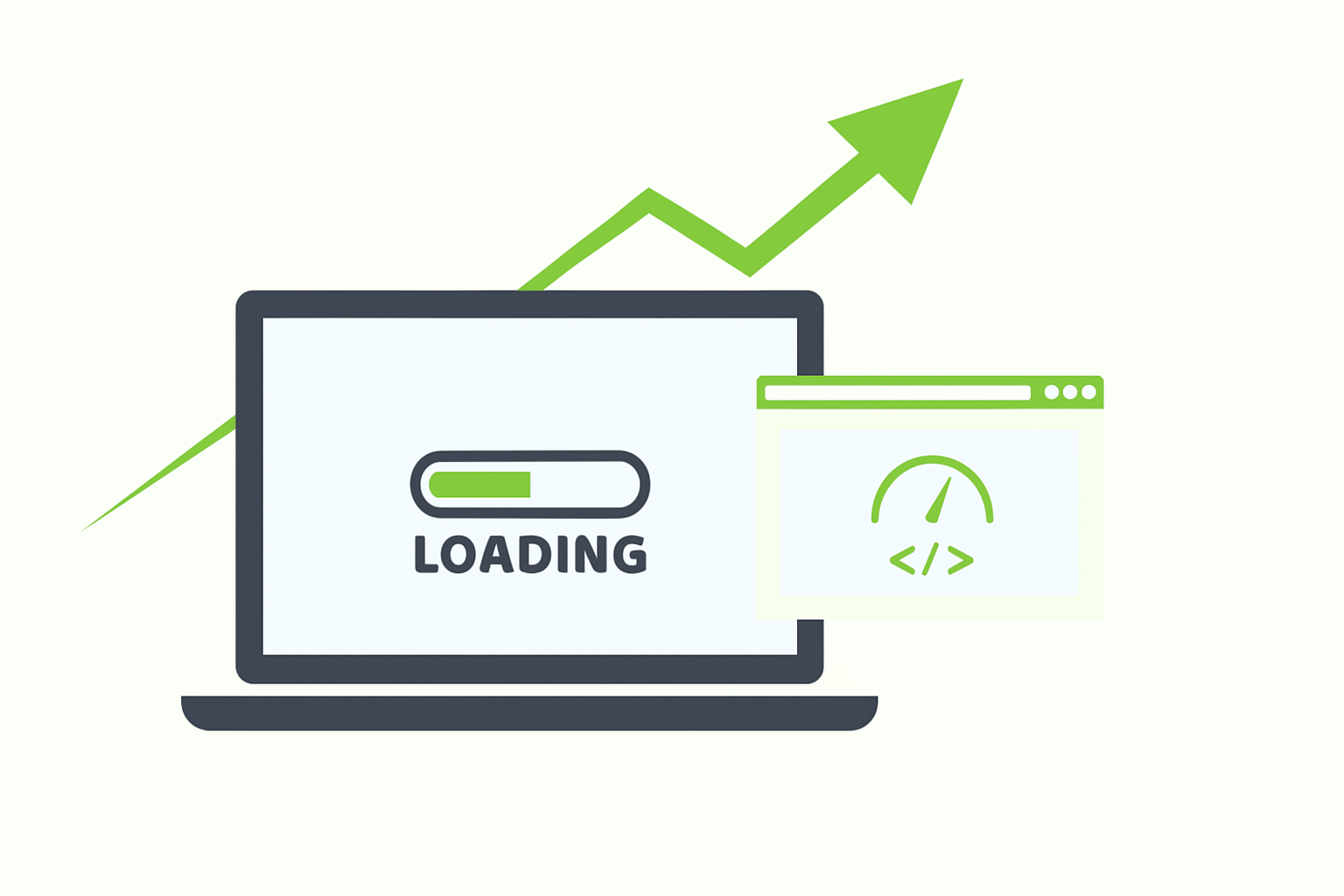
12
Reduce Website Load Time with Image Compression
Learn how image compression and modern formats like WebP can reduce website load time, boost SEO, and improve user experience.
How to Reduce Website Load Time with Image Compression and Modern Formats
Introduction: Why Website Speed Matters More Than Ever
Imagine visiting a website that takes more than a few seconds to load. Frustrating, right? In today’s digital world, speed is everything. According to Google, 53% of mobile visitors leave a site that takes longer than 3 seconds to load. That means if your site is slow, you’re losing traffic, customers, and revenue.
One of the biggest culprits of slow websites? Images.
High-quality images are essential for design and engagement, but if not optimized, they can drag your site speed down. That’s where image compression and modern formats come in.
In this guide, we’ll explore how to reduce website load time using compression techniques and next-gen image formats like WebP and AVIF. By the end, you’ll have a clear roadmap for boosting your site performance and SEO rankings.
Why Images Impact Website Performance
Images Take Up Most of a Page’s Weight
Studies show that images account for 50–70% of total webpage weight. While videos and scripts matter, bulky images often slow websites the most.
Impact on SEO and User Experience
- SEO: Google uses site speed as a ranking factor. Faster sites score better on Core Web Vitals.
- Conversions: Every 1-second delay in load time can reduce conversions by up to 7%.
- User Experience: Faster sites lead to higher engagement and lower bounce rates.
Understanding Image Compression
What Is Image Compression?
Image compression is the process of reducing the file size of an image without significantly affecting its quality.
There are two main types:
- Lossy Compression – Removes some image data to reduce size (JPG, WebP lossy).
- Lossless Compression – Preserves original data while reducing file size (PNG, WebP lossless).
Benefits of Image Compression
- Faster page load speed
- Better SEO rankings
- Reduced bandwidth usage
- Enhanced mobile performance
Modern Image Formats Explained
JPG (JPEG)
- Best for photos and complex visuals.
- Uses lossy compression.
- Widely supported but not always the most efficient.
PNG
- Best for logos, icons, and graphics requiring transparency.
- Uses lossless compression.
- Larger file sizes compared to JPG.
WebP
- Developed by Google.
- Offers both lossy and lossless compression.
- 25–35% smaller than JPG and PNG at the same quality.
- Supports transparency and animation.
AVIF
- Next-gen format with even smaller file sizes than WebP.
- Superior compression and quality.
- Limited but growing browser support.
Step-by-Step Guide to Reducing Website Load Time with Image Compression
Step 1: Audit Your Website’s Images
Use tools like:
- Google PageSpeed Insights
- GTmetrix
- WebPageTest
These tools highlight oversized images and recommend next-gen formats.
Step 2: Choose the Right Format
- Use JPG or WebP for photos.
- Use PNG or WebP for graphics and logos.
- Use WebP or AVIF for modern websites prioritizing speed.
Step 3: Compress Images Before Upload
Tools to try:
- TinyPNG / TinyJPG
- Squoosh (Google)
- ImageOptim
Step 4: Automate Compression with CMS Plugins
For WordPress:
- Smush
- ShortPixel
- Imagify
These plugins compress images automatically on upload.
Step 5: Implement Lazy Loading
Lazy loading ensures images load only when they appear on the screen.
HTML Example:
<img src="image.webp" loading="lazy" alt="Optimized image">
Step 6: Use Responsive Images
Serve images that adapt to different devices with srcset:
<img src="image-800.webp"
srcset="image-480.webp 480w, image-1200.webp 1200w"
sizes="(max-width: 600px) 480px, 800px"
alt="Responsive image">
Step 7: Enable CDN and Caching
A Content Delivery Network (CDN) can serve optimized images closer to the user, improving speed. Services like Cloudflare or BunnyCDN also support WebP delivery.
Real-World Example: The Impact of Image Compression
An eCommerce store reduced its average image size from 450 KB to 120 KB using WebP and compression. Results:
- Page load time dropped by 40%.
- Bounce rate decreased by 15%.
- Organic traffic increased by 22% in 3 months.
Common Mistakes to Avoid
- Uploading huge images straight from a camera or design software.
- Over-compressing images, resulting in blurry visuals.
- Forgetting alt text, which hurts SEO and accessibility.
- Not providing fallback formats for unsupported browsers.
Advanced Techniques for Developers
Use Image CDNs
Image CDNs like Imgix, Cloudinary, and Optimole automatically deliver optimized images in the best format and size for each user.
Serve Different Formats with <picture>
Example:
<picture> <source srcset="image.avif" type="image/avif"> <source srcset="image.webp" type="image/webp"> <img src="image.jpg" alt="Multi-format image"> </picture>
This ensures compatibility across browsers.
Future of Image Optimization
While WebP is now mainstream, AVIF is gaining traction with its superior compression. In the future, AI-powered tools may further automate optimization, making it even easier to balance speed and quality.
Conclusion: Take Control of Your Website Speed
Website performance is no longer optional—it’s essential for SEO, user experience, and conversions. By leveraging image compression and modern formats like WebP and AVIF, you can significantly reduce load times and gain a competitive edge.
Call to Action: Start by auditing your images today. Switch to WebP or AVIF, compress your files, and implement lazy loading. Your visitors—and Google—will thank you.
Contact
Missing something?
Feel free to request missing tools or give some feedback using our contact form.
Contact Us